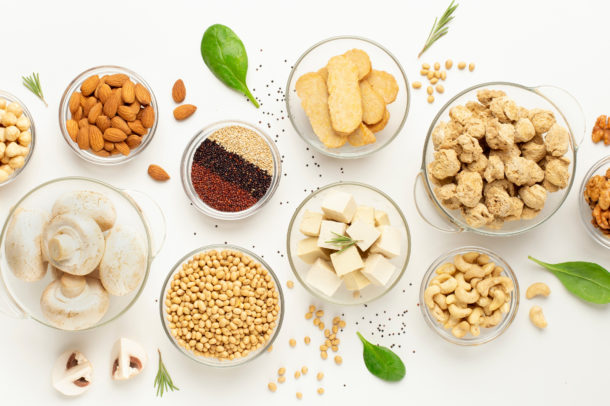Submitted by: Karen Sevong MScFN RD CDE
There are various benefits to including more plant-based protein alternatives in your daily food choices. It is a great way to increase fibre, regulate bowel movements, and manage blood sugars and heart health. The updated National Kidney Foundation Kidney Disease Outcomes Quality Initiative, KDOQI guidelines support a growing amount of scientific evidence for more plant-based proteins in kidney disease.
However, it can be tricky for those living with kidney disease, and there are a few considerations to keep in mind:
- It is essential to be aware of your protein, potassium and phosphorus requirements.
- Protein recommendations vary with different stages in kidney disease and other medical conditions. A common question becomes, “What is the best way to include plant-based proteins that meet protein, potassium and phosphorus recommendations?”
- A dietitian can help determine suitable amounts to meet your needs and offer suggestions to include a variety of sources.
Here are a few tips to consider when including plant-based protein options in your meals:
1. Reading labels: Potassium, sodium and phosphorus content in pre-prepared vegan or vegetarian products (for example, Beyond Meat™ burgers , tofu hot dogs and vegetable ground) or other canned or frozen soy products.
- Beware of seasoning mixtures with added sodium, potassium, and phosphate additives
2. Vary the sources, the frequency and portion sizes of plant-based proteins:
- Soy-based sources: Tofu, Textured vegetable protein, Tempeh,
Seitan, Soybeans, Edamame, and Soy milk - Other sources: Legumes/beans and peas (including chickpeas, split
peas), nuts, quinoa, couscous, barley, bulgur, ground flaxseed, and hemp hearts
will vary in protein, potassium and phosphorus content.
Be mindful of portion sizes for any individual restrictions and consulting with a Registered Dietitian, Kidney Specialist and your Healthcare Team is recommended.
Follow this link to the Plant-based Protein Options Fact Sheet for more references.
